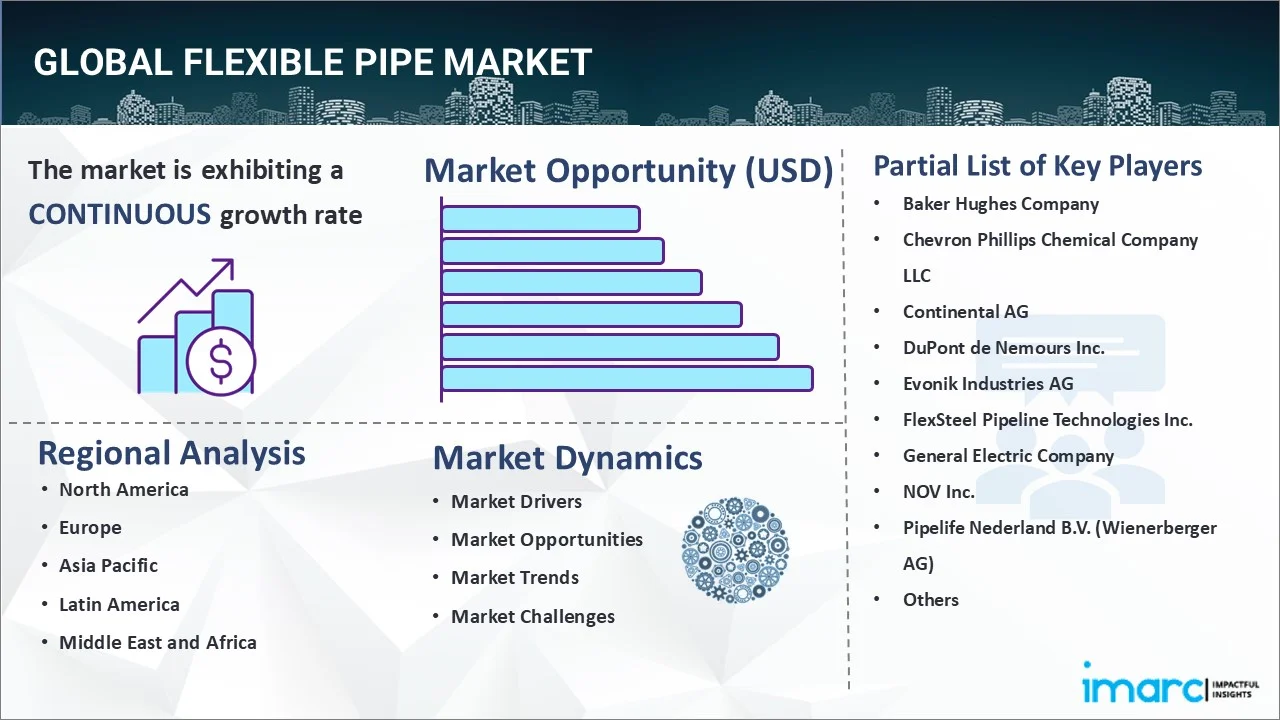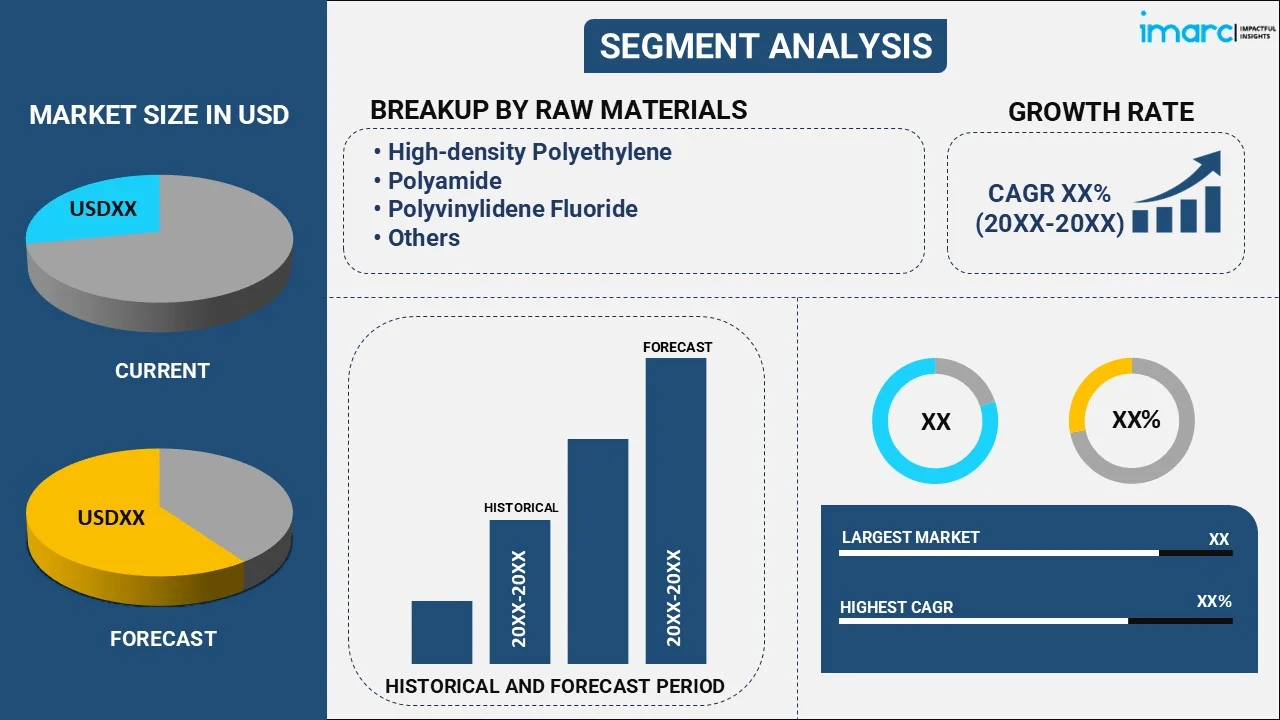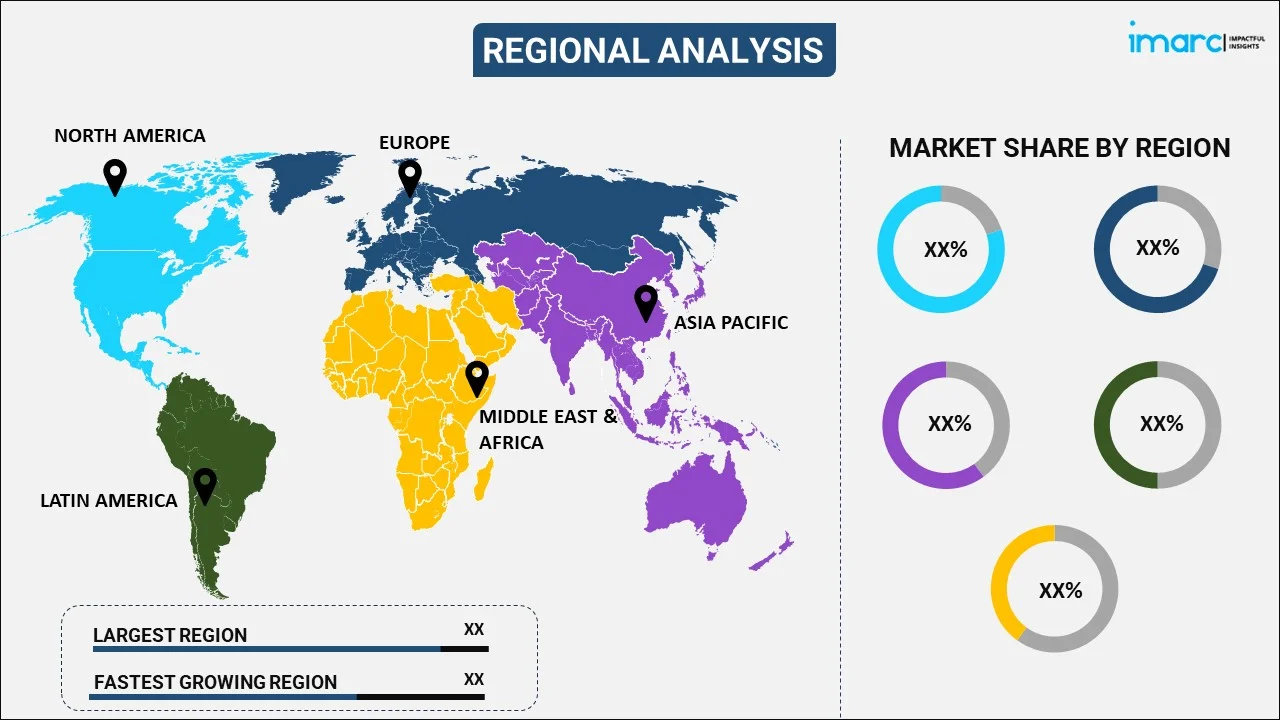
Flexible Pipe Market Report by Raw Material (High-density polyethylene, Polyamide, Polyvinylidene fluoride, and Others), Application (Onshore, Offshore), End Use Industry (Oil and Gas, Water Treatment Plants, Chemical and Petrochemicals, Mining, Pharmaceuticals, Food and Beverages, and Others), and Region 2025-2033
Market Overview:
The global flexible pipe market size reached USD 1.30 Billion in 2024. Looking forward, IMARC Group expects the market to reach USD 1.78 Billion by 2033, exhibiting a growth rate (CAGR) of 3.4% during 2025-2033. The increasing offshore oil and gas exploration, rising demand for deepwater and ultra-deepwater reserves, technological advancements, expansion of the offshore renewable energy sector, and infrastructure development in emerging economies are some of the major factors propelling the market.
|
Report Attribute
|
Key Statistics
|
|---|---|
|
Base Year
|
2024
|
|
Forecast Years
|
2025-2033
|
|
Historical Years
|
2019-2024
|
|
Market Size in 2024
|
USD 1.30 Billion |
|
Market Forecast in 2033
|
USD 1.78 Billion |
| Market Growth Rate 2025-2033 | 3.4% |
Flexible pipes are a type of piping system designed to accommodate movements, vibrations, or displacements in various applications. They are composed of multiple layers of materials such as polymers, metals, or composites, which provide strength and flexibility. These pipes can bend or flex without breaking, allowing them to adapt to changes in their environment. They are commonly used in industries like oil and gas, marine, and plumbing, where rigid pipes are unsuitable due to their inability to withstand movement or pressure fluctuations. These pipes offer advantages such as reduced stress on equipment, improved durability, and easier installation, making them a versatile solution for dynamic environments.

The expansion of offshore exploration activities drives the demand for flexible pipes. These pipes are crucial in transporting hydrocarbons from subsea wells to production facilities due to their ability to withstand harsh ocean conditions. Additionally, as conventional oil and gas reserves become depleted, there is a shift toward exploring deepwater and ultra-deepwater reserves. Flexible pipes are essential in these environments, as they can withstand high pressures and extreme temperatures at great depths. Besides this, the increasing focus on renewable energy, particularly offshore wind farms, is driving the product demand. These pipes are used for cable protection and transmission in offshore wind installations. Other than this, these pipes offer cost and operational advantages compared to rigid alternatives. They are lighter, easier to install, and require minimal maintenance. Their flexibility allows for reduced stress on equipment, mitigating the risk of failure and minimizing downtime. Furthermore, ongoing advancements in flexible pipe manufacturing techniques, materials, and designs have improved their performance and reliability. Innovations, such as enhanced corrosion resistance, higher crush resistance, and improved fatigue resistance, have expanded their applications in various industries.
Flexible Pipe Market Trends/Drivers:
Increasing offshore oil and gas exploration
The increasing demand for oil and gas continues to rise, and offshore reserves play a significant role in meeting this demand. As conventional onshore reserves become more limited, there is a growing emphasis on exploring offshore resources. Flexible pipes are vital components in offshore drilling operations, as they provide a reliable and flexible means of transporting hydrocarbons from subsea wells to production platforms or vessels. The ability of these pipes to withstand harsh ocean conditions, including extreme temperatures, high pressures, and corrosive environments, makes them indispensable for offshore oil and gas exploration and production activities.
Growing demand for deepwater and ultra-deepwater reserves
Deepwater and ultra-deepwater reserves, typically located in water depths exceeding 500 meters, have become increasingly essential sources of oil and gas. These reserves often require advanced technologies and equipment due to the challenging operational conditions they pose. Flexible pipes are specifically engineered to handle the extreme pressures and temperatures encountered in these deepwater environments. Their superior resistance to crushing, fatigue, and corrosion makes them suitable for use in ultra-deepwater oil and gas production, ensuring the safe and efficient transportation of hydrocarbons from the seabed to the surface.
Significant Technological advancements
Continuous advancements in manufacturing techniques, materials, and designs have significantly contributed to the growth of the market. Manufacturers have developed innovative solutions to enhance the performance and reliability of flexible pipes. For example, the use of high-performance polymers and composite materials has improved the pipes' resistance to chemical corrosion, abrasion, and fatigue, extending their operational lifespan. Moreover, the development of advanced manufacturing processes, such as automated production lines and improved quality control systems, has increased the efficiency and consistency of flexible pipe manufacturing. These technological advancements have expanded the range of applications for flexible pipes and also improved their overall durability, safety, and cost-effectiveness, driving their adoption in various industries, including oil and gas, mining, and renewables.
Flexible Pipe Industry Segmentation:
IMARC Group provides an analysis of the key trends in each segment of the global flexible pipe market report, along with forecasts at the global, regional and country levels from 2025-2033. Our report has categorized the market based on raw material, application and end use industry.
Breakup by Raw Material:

- High-density Polyethylene
- Polyamide
- Polyvinylidene Fluoride
- Others
The report has provided a detailed breakup and analysis of the market based on the raw material. This includes high-density polyethylene, polyamide, polyvinylidene fluoride, and others. According to the report, high-density polyethylene accounted for the largest market share.
High-density polyethylene is widely used in flexible pipes due to its exceptional properties. First, HDPE exhibits excellent chemical resistance, making it suitable for transporting a wide range of fluids, including corrosive substances. It is also highly resistant to abrasion, impact, and environmental stress cracking, ensuring durability and longevity in challenging operating conditions. HDPE pipes have a smooth inner surface, minimizing frictional losses and facilitating efficient fluid flow. Additionally, HDPE is lightweight, which simplifies transportation, handling, and installation processes. Its flexibility enables easy bending and laying, reducing the need for additional fittings and minimizing installation costs. Furthermore, HDPE is non-toxic, resistant to biological growth, and has a low carbon footprint, making it an environmentally friendly choice for various applications.
Breakup by Application:
- Onshore
- Offshore
A detailed breakup and analysis of the market based on the application has also been provided in the report. This includes onshore and offshore. According to the report, offshore represented the leading segment.
Flexible pipes play a crucial role in offshore environments, particularly in the oil and gas industry. They are extensively used in subsea oil and gas production systems, connecting subsea wells to floating production units or fixed platforms. Offshore environments pose unique challenges, including high pressures, extreme temperatures, and corrosive seawater. They are designed to withstand these harsh conditions while accommodating the movement of floating structures and the bending of subsea pipelines. They offer superior resistance to fatigue, corrosion, and crushing, ensuring the safe and reliable transportation of hydrocarbons from the seabed to the surface. Additionally, these pipes are utilized in offshore renewable energy installations, such as offshore wind farms. They are employed for cable protection and transmission, enabling the efficient transfer of electricity from offshore wind turbines to onshore grids. Flexible pipes' ability to adapt to changing seabed conditions and withstand environmental stress makes them an ideal choice for offshore applications.
Breakup by End Use Industry:
- Oil and Gas
- Water Treatment Plants
- Chemical and Petrochemicals
- Mining
- Pharmaceuticals
- Food and Beverages
- Others
The report has provided a detailed breakup and analysis of the market based on the end use industry. This includes oil and gas, water treatment plants, chemical and petrochemicals, mining, pharmaceuticals, food and beverages, and others.
In the oil and gas industry, flexible pipes are employed in offshore oil and gas production systems, connecting subsea wells to production platforms or vessels. These pipes transport hydrocarbons from the seabed to the surface, withstanding high pressures, extreme temperatures, and corrosive environments. They are also utilized in onshore pipeline installations, accommodating ground movements and temperature fluctuations. They enable the safe and efficient transportation of fluids from wells to processing plants or storage facilities. In addition, these pipes are employed in oil and gas exploration activities, facilitating the extraction of resources from challenging terrains and remote locations.
Flexible pipes are utilized in water treatment plants for the conveyance of fluids. They are used in various stages of the treatment process, including the transportation of raw water, chemicals, and treated water. They provide flexibility and durability, ensuring the efficient transfer of fluids within the treatment facility. They are resistant to corrosion, chemical degradation, and biofouling, making them suitable for handling different water treatment chemicals and processes. Flexible pipes are also employed for the distribution of treated water to distribution networks or storage facilities, maintaining the quality and integrity of the water supply system.
Flexible pipes play a crucial role in chemical and petrochemical industries. They are used for the transportation of various chemicals, solvents, acids, and corrosive substances within processing plants. These pipes provide resistance to chemical corrosion, ensuring the safe and reliable conveyance of hazardous fluids. They can withstand high temperatures, pressures, and aggressive chemical environments commonly found in chemical and petrochemical operations. Additionally, flexible pipes are employed for fluid transfer during batch processing, reactor operations, and storage tank connections. Their flexibility allows for easy installation and movement, reducing the need for complex and rigid piping systems. They also offer advantages in retrofit projects or plant expansions, where space limitations or changing process requirements demand adaptable and efficient piping solutions.
Breakup by Region:

- North America
- United States
- Canada
- Asia-Pacific
- China
- Japan
- India
- South Korea
- Australia
- Indonesia
- Others
- Europe
- Germany
- France
- United Kingdom
- Italy
- Spain
- Russia
- Others
- Latin America
- Brazil
- Mexico
- Others
- Middle East and Africa
North America exhibits a clear dominance in the market
The report has also provided a comprehensive analysis of all the major regional markets, which include North America (the United States and Canada); Europe (Germany, France, the United Kingdom, Italy, Spain, Russia, and others); Asia Pacific (China, Japan, India, South Korea, Australia, Indonesia, and others); Latin America (Brazil, Mexico, and others); and the Middle East and Africa. According to the report, North America was the largest market for flexible pipes.
In North America, the increasing exploration and production activities in the oil and gas sector, particularly in offshore reserves, are creating a significant product demand. The region has a substantial presence of offshore drilling activities in the Gulf of Mexico, where flexible pipes are essential for efficient hydrocarbon transportation. Additionally, the ongoing investments in shale gas exploration and production are further fueling the product sales in North America. The expansion of infrastructure projects, including water treatment plants, industrial facilities, and pipeline networks, is also contributing to market growth.
Competitive Landscape:
The key players in the market are actively engaged in various strategies to maintain their competitive position. They are investing in research and development to enhance their product offerings, focusing on innovations such as advanced materials, improved durability, and increased operational efficiency. These companies are also expanding their production capacities and global presence through mergers, acquisitions, and partnerships. Additionally, market players are actively pursuing collaborations with end-users and industry stakeholders to develop customized solutions and meet specific project requirements. They are continuously striving to optimize their supply chain and distribution networks to ensure timely delivery and customer satisfaction. Furthermore, key players are investing in marketing and promotional activities to increase market awareness and expand their customer base.
The market research report has provided a comprehensive analysis of the competitive landscape in the market. Detailed profiles of all major companies have also been provided. Some of the key players in the market include:
- Baker Hughes Company
- Chevron Phillips Chemical Company LLC
- Continental AG
- DuPont de Nemours Inc.
- Evonik Industries AG
- FlexSteel Pipeline Technologies Inc.
- General Electric Company
- NOV Inc.
- Pipelife Nederland B.V. (Wienerberger AG)
- Prysmian S.p.A.
- Shell Plc
- Solvay S.A.
- Strohm B.V.
- TechnipFMC Plc
Recent Developments:
- In late 2022, Baker Hughes introduced their FPS technology, which is aimed at improving the design, manufacturing, and installation of flexible pipe systems. Additionally, Baker Hughes has introduced an onshore composite flexible pipe that offers lower cost of ownership, reduced corrosion risks, and lower manufacturing emissions.
- Pipelife Nederland B.V. has been involved in the development of long-length reinforced flexible pipes. These pipes have been designed to meet the specific requirements of various industries, including the oil and gas sector.
Flexible Pipe Market Report Scope:
| Report Features | Details |
|---|---|
| Base Year of the Analysis | 2024 |
| Historical Period | 2019-2024 |
| Forecast Period | 2025-2033 |
| Units | Billion USD |
| Scope of the Report | Exploration of Historical Trends and Market Outlook, Industry Catalysts and Challenges, Segment-Wise Historical and Predictive Market Assessment:
|
| Raw Materials Covered | High-density polyethylene, Polyamide, Polyvinylidene fluoride, Others |
| Applications Covered | Onshore, Offshore |
| End Use Industries Covered | Oil and Gas, Water Treatment Plants, Chemical and Petrochemicals, Mining, Pharmaceuticals, Food and Beverages, Others |
| Regions Covered | Asia Pacific, Europe, North America, Latin America, Middle East and Africa |
| Countries Covered | United States, Canada, Germany, France, United Kingdom, Italy, Spain, Russia, China, Japan, India, South Korea, Australia, Indonesia, Brazil, Mexico |
| Companies Covered | Baker Hughes Company, Chevron Phillips Chemical Company LLC, Continental AG, DuPont de Nemours Inc., Evonik Industries AG, FlexSteel Pipeline Technologies Inc., General Electric Company, NOV Inc., Pipelife Nederland B.V. (Wienerberger AG), Prysmian S.p.A., Shell plc, Solvay S.A., Strohm B.V., TechnipFMC plc, etc. |
| Customization Scope | 10% Free Customization |
| Post-Sale Analyst Support | 10-12 Weeks |
| Delivery Format | PDF and Excel through Email (We can also provide the editable version of the report in PPT/Word format on special request) |
Key Benefits for Stakeholders:
- IMARC’s industry report offers a comprehensive quantitative analysis of various market segments, historical and current market trends, market forecasts, and dynamics of the flexible pipe market from 2019-2033.
- The research report provides the latest information on the market drivers, challenges, and opportunities in the global flexible pipe market.
- The study maps the leading, as well as the fastest-growing, regional markets. It further enables stakeholders to identify the key country-level markets within each region.
- Porter's five forces analysis assist stakeholders in assessing the impact of new entrants, competitive rivalry, supplier power, buyer power, and the threat of substitution. It helps stakeholders to analyze the level of competition within the flexible pipe industry and its attractiveness.
- Competitive landscape allows stakeholders to understand their competitive environment and provides an insight into the current positions of key players in the market.
Key Questions Answered in This Report
The global flexible pipe market was valued at USD 1.30 Billion in 2024.
We expect the global flexible pipe market to exhibit a CAGR of 3.4% during 2025-2033.
The expanding petrochemical sector, along with the growing adoption of flexible pipes in transferring gases and hot liquids, based on its high-durability and heat resistant properties, is primarily driving the global flexible pipe market.
The sudden outbreak of the COVID-19 pandemic had led to the implementation of stringent lockdown regulations across several nations resulting in temporary closure of numerous end-use industries for flexible pipes.
Based on the raw material, the global flexible pipe market has been segmented into high-density polyethylene, polyamide, polyvinylidene fluoride, and others. Among these, high-density polyethylene holds the majority of the total market share.
Based on the application, the global flexible pipe market can be divided into onshore and offshore. Currently, offshore exhibits a clear dominance in the market.
On a regional level, the market has been classified into North America, Asia-Pacific, Europe, Latin America, and Middle East and Africa, where North America currently dominates the global market.
Some of the major players in the global flexible pipe market include Baker Hughes Company, Chevron Phillips Chemical Company LLC, Continental AG, DuPont de Nemours Inc., Evonik Industries AG, FlexSteel Pipeline Technologies Inc., General Electric Company, NOV Inc., Pipelife Nederland B.V. (Wienerberger AG), Prysmian S.p.A., Shell plc, Solvay S.A., Strohm B.V., and TechnipFMC plc.
Need more help?
- Speak to our experienced analysts for insights on the current market scenarios.
- Include additional segments and countries to customize the report as per your requirement.
- Gain an unparalleled competitive advantage in your domain by understanding how to utilize the report and positively impacting your operations and revenue.
- For further assistance, please connect with our analysts.
 Inquire Before Buying
Inquire Before Buying
 Speak to an Analyst
Speak to an Analyst
 Request Brochure
Request Brochure
 Request Customization
Request Customization




.webp)




.webp)












